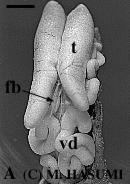
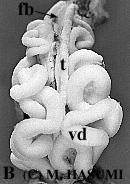
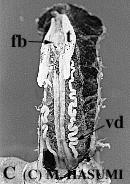
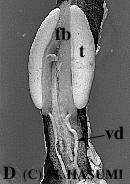
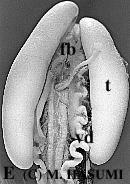
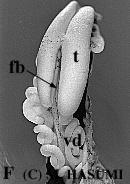
 |  |
 |  |
 |  |
(A) March: Males during spermiation, shortly after entering a breeding pond. Testicular mass decreases suddenly due to spermiation, and resultantly it varies highly within an individual.
(B) March: Typical aquatic-phase males, collected at the peak of the breeding season. Highly convoluted vasa deferentia are packed with a great amount of seminal fluid. Spermatozoa are very rare in the testicular lobules (Testicular Lobules).
(C) May: Terrestrial-phase males approximately one month after breeding activity ceased. The minimum mass of the left testis is recorded in May (5 mg). Thereafter, testicular mass increases drastically from June-August.
(D) July: Terrestrial-phase males. The vasa deferentia assume a nearly straight course in July and August.
(E) September: Terrestrial-phase males. The vasa deferentia suddenly begin to convolute in September. The testis-size in August and September is the greatest of all monthly values, and the maximum mass of the left testis is recorded in August (634 mg).
(F) November: Terrestrial-phase males just before hibernation. The degree of convolution in the vasa deferentia becomes extreme in November. Testicular mass decreases gradually from August-November. This condition in November remains during hibernation.